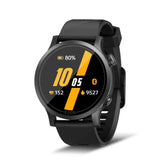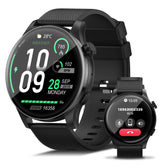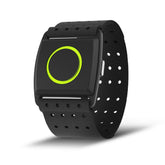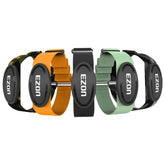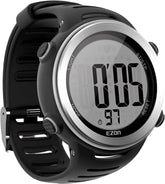Ideal Heart Rates for Various Fitness Activities and Their Significance
Maintaining an optimal heart rate during workouts is crucial for achieving your fitness goals, whether you're trying to lose weight, build endurance, or improve overall health. Different types of fitness activities require varying heart rate zones to maximize effectiveness and safety. In this article, we will explore the ideal heart rate ranges for various workouts, including running, cycling, and strength training. We’ll also discuss how factors like age and fitness level impact these rates and why keeping your heart rate in the right zone is essential.
Understanding Heart Rate Zones
Heart rate zones are defined ranges that correspond to different levels of exercise intensity. These zones can help you target specific fitness goals:
- Resting Heart Rate: Your heart rate when you are at rest, typically 60-100 bpm for adults.
- Moderate Intensity: 50-70% of your maximum heart rate (MHR), ideal for general fitness and fat burning.
- Vigorous Intensity: 70-85% of your MHR, suitable for improving cardiovascular fitness and endurance.
- Anaerobic Zone: 85-95% of your MHR, beneficial for high-intensity training and building speed and power.
To calculate your MHR, use the formula:
MHR = 220 - your age
Ideal Heart Rates for Different Workouts
1. Running
Running is an excellent cardiovascular workout that can be tailored to various fitness levels.
- Moderate Pace: Aim for 50-70% of your MHR. For a 30-year-old, this translates to a heart rate between 95 bpm (50% of MHR) and 133 bpm (70% of MHR).
- High-Intensity Running: During sprinting or interval training, target 70-85% of your MHR, which would be between 133 bpm and 162 bpm for the same 30-year-old.
2. Cycling
Cycling, whether on a stationary bike or outdoors, is another fantastic way to elevate your heart rate.
- Leisurely Cycling: Maintain a heart rate within the 50-70% MHR range for a comfortable ride.
- High-Intensity Cycling: During hill climbs or fast-paced rides, aim for 70-85% of your MHR.
3. Strength Training
While strength training may not elevate your heart rate as much as aerobic exercises, it still plays a crucial role in cardiovascular fitness.
- Moderate Resistance: During traditional weight lifting, your heart rate may hover around 50-70% of your MHR, depending on rest intervals and overall intensity.
- Circuit Training: If you're engaging in high-repetition sets with minimal rest, you can reach 70-85% of your MHR, effectively combining strength and cardio.
Factors Affecting Heart Rate
1. Age
As you age, your maximum heart rate generally decreases, impacting your target heart rate zones. It’s important to adjust your training according to your current age and fitness level.
2. Fitness Level
More fit individuals often have a lower resting heart rate and can efficiently handle higher intensities without undue strain. Conversely, beginners may find that their heart rates increase quickly during exercise.
3. Hydration and Nutrition
Staying hydrated and properly fueled can significantly affect your heart rate during workouts. Dehydration can lead to an elevated heart rate, while proper nutrition supports optimal performance.
The Importance of Monitoring Heart Rate
Using a heart rate monitor watch can help you stay within your target heart rate zones during workouts. Here are some benefits of tracking your heart rate:
- Real-Time Feedback: Monitor your heart rate during exercise to ensure you are working within the desired intensity.
- Tracking Progress: Over time, you can observe improvements in your heart rate response to exercise, indicating increased fitness levels.
- Personalized Training: Adjust your workout intensity based on real-time data, helping you optimize your training and avoid overexertion.
Choosing the Best Sports Watch for Workouts
When selecting a sports watch with heart monitor capabilities, consider the following features:
- Accuracy: Look for watches known for their precise heart rate tracking.
- Battery Life: Ensure the watch has a long battery life to support extended workouts.
- User-Friendly Interface: A straightforward display allows you to monitor your heart rate easily.
- Additional Features: Many watches also offer GPS tracking, activity logging, and workout suggestions, enhancing your exercise experience.
Conclusion
Understanding and maintaining the ideal heart rate during various fitness activities is essential for achieving your health and fitness goals. By recognizing the heart rate zones for running, cycling, and strength training, you can tailor your workouts for maximum effectiveness. Factors like age and fitness level will influence your heart rate, so it’s important to monitor your progress with a reliable heart rate monitor watch or sports watch. By doing so, you can ensure that you remain safe and effective in your pursuit of fitness!
